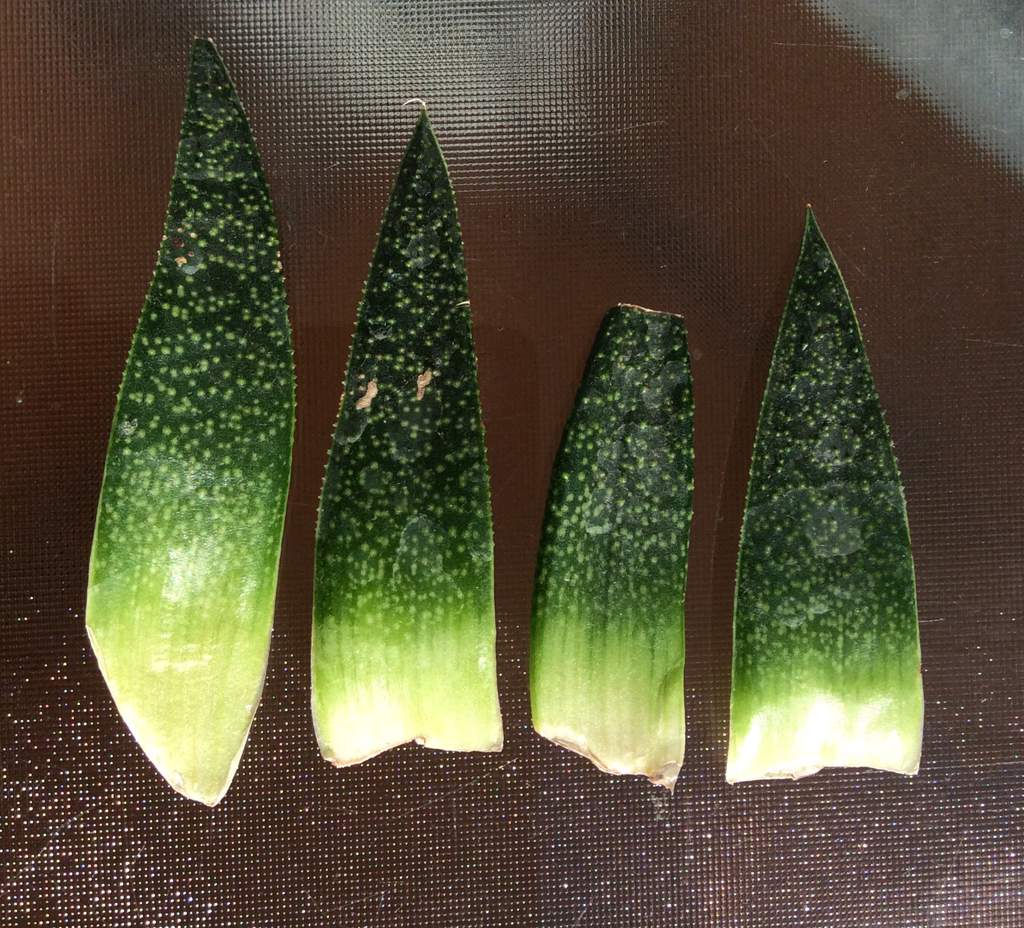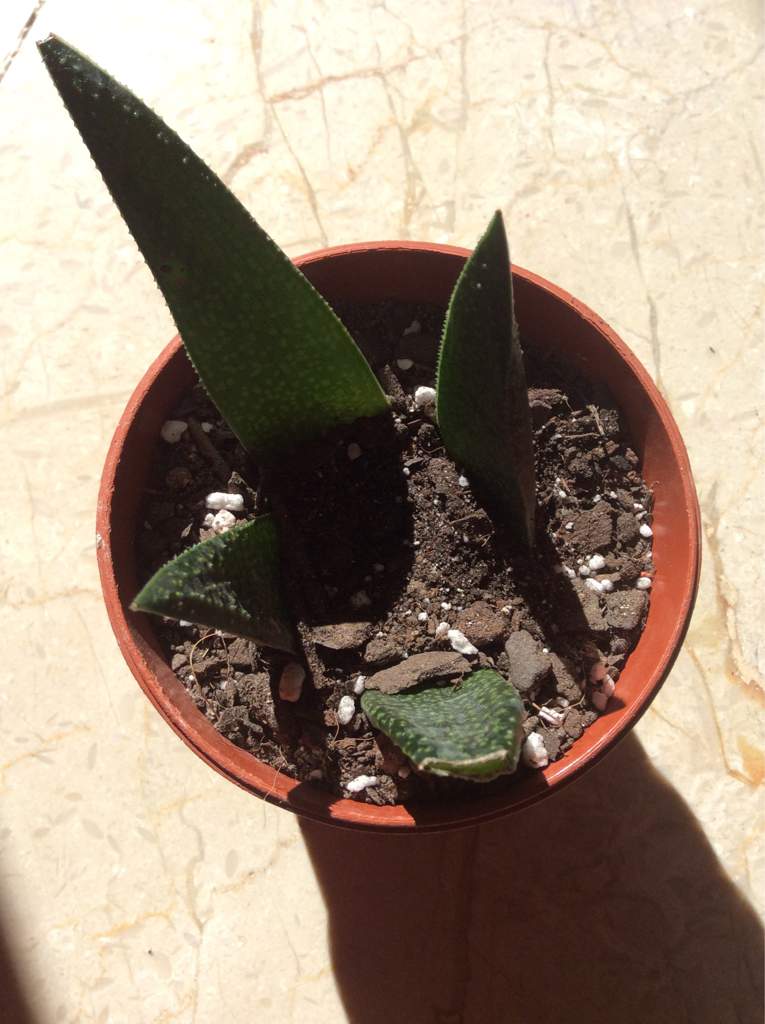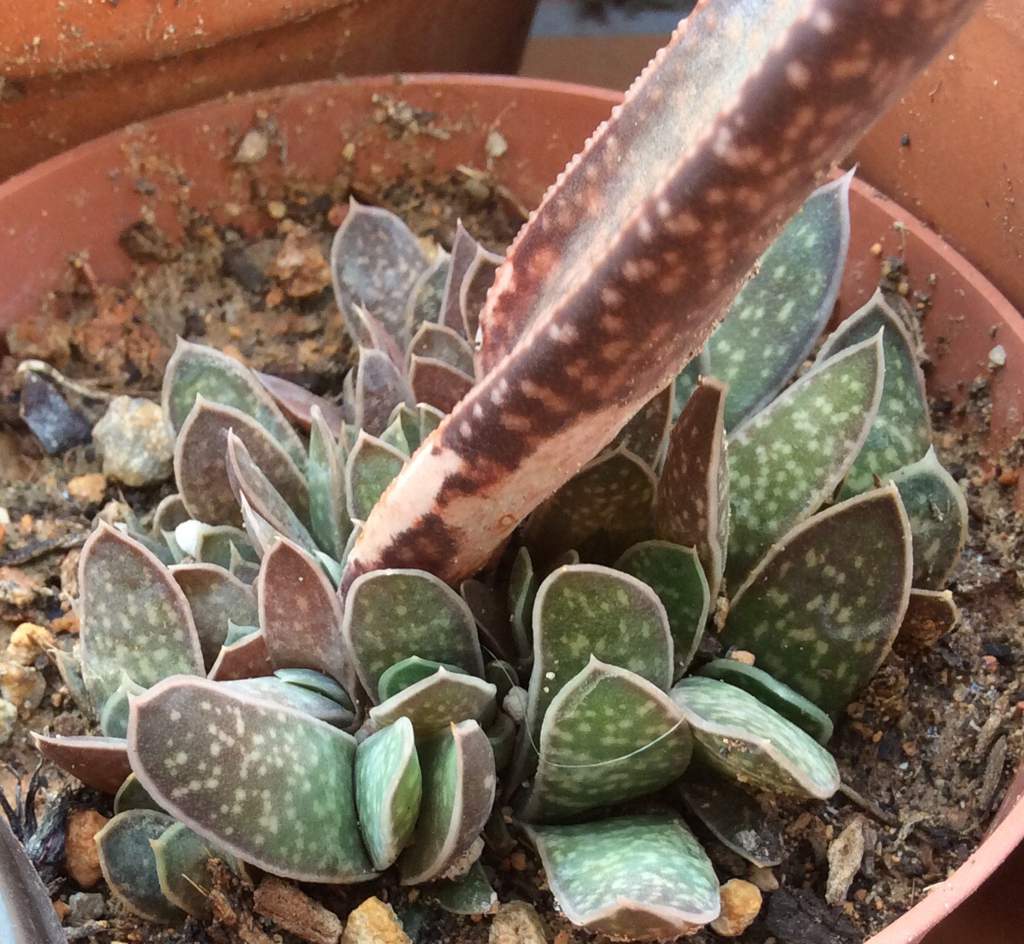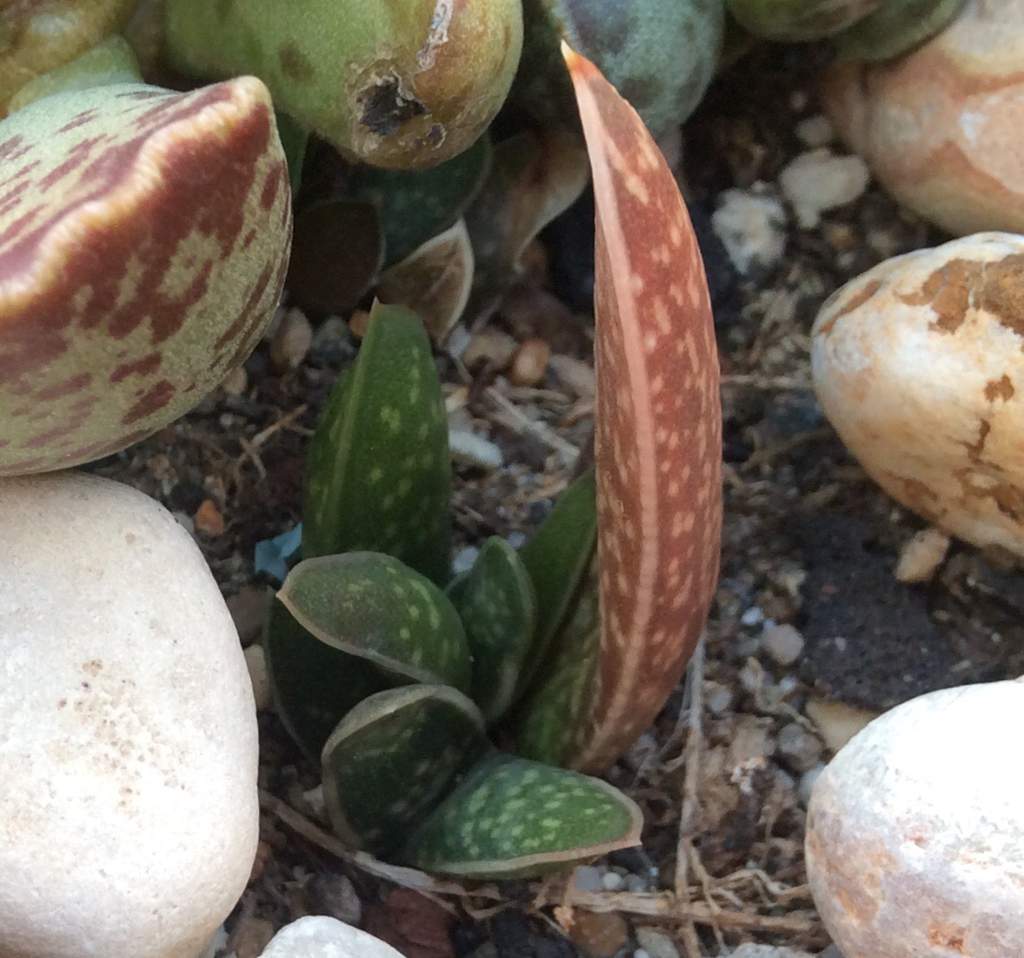Hello my lovely fellow succ lovers!
This time I would like to show you my method of propagation which works for gasterias, gasteraloe and other species from aloe family (unfortunately aloe is hardest specie to propagate from leaves… but yes – it is possible).
This method works great also for Kalanchoe and Cotyledon species.
During the last few years I tested few methods, and as for echeverias, sedeverias, sedums, graptoverias etc. the best option seems to be just laying the leaves on the dirt or wet cotton, for aloe family better method is to stick leaves into the soil. In case of aloe family – you must remember to let the leaves callus for longer – at least one week.

Then you can stick them into regular cactus soil (must be dry), and forget about them

If it’s very dry, you can spray them sometimes.
For all species from aloe family you must be very patient – it can take a good few months for them to grow the roots and even longer to grow the leaves but it works!



I hope it helps some of you
Happy growing!

Thanks for the info! Do these want to remain in direct sunlight throughout the whole process?
Hello, thank you for the comment
It all depends on where you live, and how hot it gets (and how strong the sun rays gets).
If you live in a colder or moderate place, they will require as much sun as they can get. Yet if you live in a very warm place, I’d recommend leaving them in a semi-shaded area, in order for them not to dry out or even burn. This is especially true if they happen to have water on them (whether it’s from watering, or just natural dew from being left outdoors), as the water can magnify the suns rays, burning them.
So it really comes down to the climate, and whether you are propagating them indoors or outside.
Hope this helps
Happy growing!